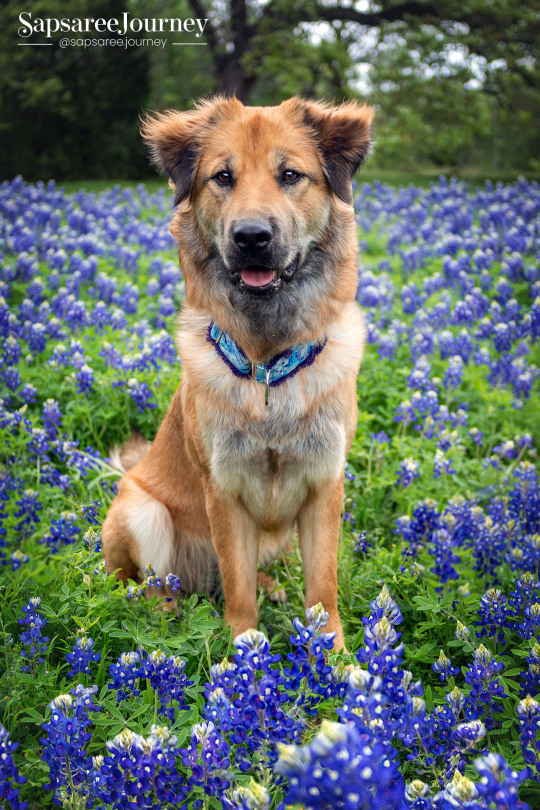#sapsal
Explore tagged Tumblr posts
Text

Obligatory bluebonnet photo! I got a few others, but obviously I had to spend too much time making One Good Edit. ™️
#journey the sapsaree#sapsaree#sapsali#sapsalgae#sapsal dog#sapsal#primitive dog#rare dog breed#rare dog#korean sapsali#korean sapsaree#삽살개#삽살이#단모삽살개#bluebonnets#dog#dog photography
108 notes
·
View notes
Text



#acayip sapsal birisi…#bizi görür görmez kosarak yanımıza geldi 😭#ne kadar çok seversem seveyim yetmedi bir türlü fjcnfkvkd UYURKEN SARILIYO Bİ DE ESEK#ve beni öpmeye calıstı 😔
13 notes
·
View notes
Text
Bir an da konu evliliğime gelince o sıra benim şimdi buna ne gerek vardı halim

3K notes
·
View notes
Text
youtube
0 notes
Note
ne zaman ileti geceriz bildirimlerini actim
Gelin olmus gidiyo muyum hadi gecek
0 notes
Text
youtube
SAP Sales Customer Billing and Integration with Finance. This video will provide an overview of SAP Billing processes and will also provide an overview integration of SAP SD Billing with the Finance module So do watch this Important class which will definitely help you
#SAPsales #billingprocesses #SDintegration #financeintegration #SAPSDbilling #FICOoverview #SAPtraining #SAPintegration #SAPcustomerbilling #SDbilling
#SAPsales#billingprocesses#SDintegration#financeintegration#SAPSDbilling#FICOoverview#SAPtraining#SAPintegration#SAPcustomerbilling#SDbilling#Youtube
0 notes
Text

We are looking for skilled SAP TM Consultants like you to join our team and revolutionize the transport management process.
Take this opportunity to make a significant impact!
Send your CV to talent@bizessence.com.au
#Softwareenginners#Consultants#Agile#Sapsales#Sapdistribution#Sapcommunity#Sapconsultant#Sapconsultants#Sapimplementation#Melbournejobs#Australiajobs#Careeropportunities
0 notes
Text








One of the Facebook groups I'm in features a breed every month, and August 2024 is sapasree month. I thought I would share my posts here so we can spread some awareness and education since information is very difficult to find (in English especially, but also still in Korean).
Day one is just basic information.
Sapsalgae 삽살개, affectionately called sapasree 삽사리/sapsali 삽살이 and occasionally shortened to sapsal 삽살, is an indigenous dog (토종개) from South Korea. The name originally derives from Hanja (Chinese characters in Korean language) 煞 (evil spirit) and 揷 (to stop), and in Hangeul, the name becomes 삽사 (chase evil spirits) where 개, gae, means dog. Thus, the sapsaree's literal name means to chase or ward off evil spirits, and as such, sapsarees are often seen as guardians or protectors that bring good luck and peace.
Sapsarees have lived in South Korea for thousands of years, but exactly how long is unknown. The history of sapsarees are largely known through oral stories, folktales, paintings, songs, and writings. Potential evidence suggests they have been around since at least the Silla Dynasty (57 BCE – 935 CE), and for some time, they were typically kept by royalty. They were largely kept as companions, but they were sometimes used as military dogs (specifics of both of these purposes are unknown but likely along the lines of a general purpose companion, watch dog, and hunter). It wasn't until the Koryo Dynasty (918–1392) that commoners started owning sapsarees. During Japan's occupation of Korea, Japan issued Ordinance No. 26 in 1940 to kill dogs for fur to use as military resources. Sapsarees were largely targeted for their long hair, and an estimated 1.5 million sapsarees were killed during this period. Sapsarees came dangerously close to extinction, and in 1969, professors from the Kyungpook National University began searching for sapsarees. Of the dogs believed to be pure by appearance and behavior, only about 30 were found by 1972 when research began.
The true dedication to preserve sapsarees began in 1989 when Professor Ji-hong Ha committed to getting sapsarees recognized as a national monument (designations to animals, plants, formations, etc. that highlight and represent Korea's heritage), and in 1992, the Korean Sapsaree Foundation was founded and sapsarees were designated as National monument #368. From the original ~30 dogs saved, only 8 remained, and from those, the breed was carefully bred for preservation and protection. In 1999, sapsarees became available to the general public, and more recently, have become available to international buyers. Today, the Korean Sapsaree Foundation permanently houses approximately 500 sapsarees for preservation, breeding, and research, and sapsarees now number in the several thousands.
As sapsarees have always been companions, their strength comes from their qualities and behavior with their family. They are most well known for their loyalty and loving nature, but they are also characteristically gentle, obedient, and sociable within their circle. They are said to love with their whole body with their people. They are not known to be a vocal breed, but they are very watchful and may alert bark at strangers. In doing so, they are characteristically fearless and loud. As current priority is toward health and genetic diversity, specific traits on individuals are less selected for or against. As such, traits like prey drive, energy level, food drive, toy drive, and social friendliness with other dogs may vary. Sapsarees are a smart breed, but they are not bred specifically for work or sport, and sometimes motivating them can take time. Uniquely without being selected for, sapsarees generally seem to enjoy water and are generally very clean dogs (ie, not crate dirty and may hold their bladder for long periods). Weak character and nervousness is a fault, and excessive aggressiveness is a disqualifying fault.
Appearance-wise, sapsarees are known for their rectangular shape, large head, large ankles, and shaggy (furnished) fur. Combined with their watchful nature, they are sometimes called "lion dogs" but generally have a amiable appearance. While they are known for their shaggy fur, approximately 3% of sapsarees have what is called "short fur" (unfurnished). In Korean, the short hair sapsarees are sometimes called Goryegae 고려개 (a term coined by Professor Ha), but they are genetically the same. In Korea, sapsarees are considered large dogs. However, they are generally a medium-sized dog at about 52-63 cm tall and 20-30 kg (20-24 in tall and 44-66 lb). They have floppy ears and are generally moderate and well balanced dogs in all aspects due to lack of specific breed purpose and trait selection. Because of their near extinction, priority has been placed on health and genetic diversity. While some selection toward appearance is considered, there remains some variation in appearance in regards to subtleties and specifics. Per the foundation, sapsarees are considered blue or yellow, or variations of blue or yellow, or spotted. Genetically, sapsarees appear to be able to be black, brown/liver, blue, various intensities of red (including a very light cream), and piebald. Various markings and variations appear as sable, agouti, masks, minor ticking on noses and paws (more ticking may be noted on piebald dogs), tan point, and residual white on the chest, paws, and nose. Erect ears are a disqualifying fault.
#sapsaree#sapsali#sapsalgae#sapsal dog#sapsal#primitive dog#rare dog breed#rare dog#korean sapsali#korean sapsaree#삽살개#삽살이#dog#삽사리#AboutTheSapsaree
10 notes
·
View notes
Text
KARDESİMİN GÖZLERİ SİSMİS(ASIRI) UYUMAKTAN CJFJCNVKKVFKDL
6 notes
·
View notes
Text
Olum tanimadiğin bi kızdan aniden iltifat almak çok minnoş hissettiriyo lan pamuk gibi oldum su an sapsal sey ya
9 notes
·
View notes
Text

karicim seni asiri cokk fazla seviyorum benim gozumde sen bu gezegendeki en guzel tatlis seksi sapsal tanricasin <33
6 notes
·
View notes
Text
Matematikcimin evinin yanındaki bakkalın yavru bir disi kedisi var. Uc aydır haftada uc gun gidiyorum ve kediyle birbirimize cok alistik. Kucucuk bir seydi bu yuzden adını Lokma koydum. Hoca da bakkal da mahalleli de alisti Lokma adına. Hatta biraz daha buyuyunce adı Tulumba olacak sonra Zungul sonra Kunefe. Saatlerce kucagimda uyuyor ve benim kucagimdayken ona dokunan herkesi tirmaliyor, baska kediler yanıma gelince onlarla kavga ediyor falan. Ben de aynı sekilde onu cok kıskanıyorum, bakkal amcanin kucuk kızı bazen esir aliyor Lokma'yı. Onu gormedigim gunlerde de cok ozluyorum. Bugun ozlemimden agladim halbuki daha dun gitmistim yanina. Sahiplenmek istiyorum Lokma'yı ama cok korkuyorum bakamazsam basina bir is gelirse diye. Cok mesgulum ve onunla ilgilenememekten de korkuyorum. Tek basima yasiyorum ve sabahtan aksama kadar da disaridayim; yalnız kalır, alisamaz ve depresyona girer diye cok korkuyorum. Sonucta bir yasinda sokak kedisi ve kuslari kovalamak en buyuk hobisi. Kucucuk evde cani cok sikilacak eminim ki. Enteresan bir sekilde Lokma'ya cok alistim ve onu cok seviyorum. Ben dogurmusum gibi hissediyorum hatta. Gercekten benim yavrum gibi. Bazen kucagima zipliyor sonra iki ayak ustunde yukselip gogsume sariliyor ve gozlerini kapatip mirildaniyor. Aglayasim geliyo ona baktikca. Cok sapsal bir kedi ve cok komik bakislari var. Cok seviyorum onu, ne yapacagimi sasirdim. Birkac ay icinde tasinacagim ve onu bir daha goremeyecek olmak kahrediyor beni.


6 notes
·
View notes
Note
Seni seviyorum sapsal
COKKK SEVIYORUM SENI BITANEMM🩷💜🩵
2 notes
·
View notes
Text
birkac gun önce kantine gittim ders cikisi oldugu icin gözlüklerim vardı kantinci abla dedi ki bu gozluklerden ben de aldim ama dışarıdan bakınca cok sapsal durdugu icin takmiyorum sen memnun musun 😀
3 notes
·
View notes

